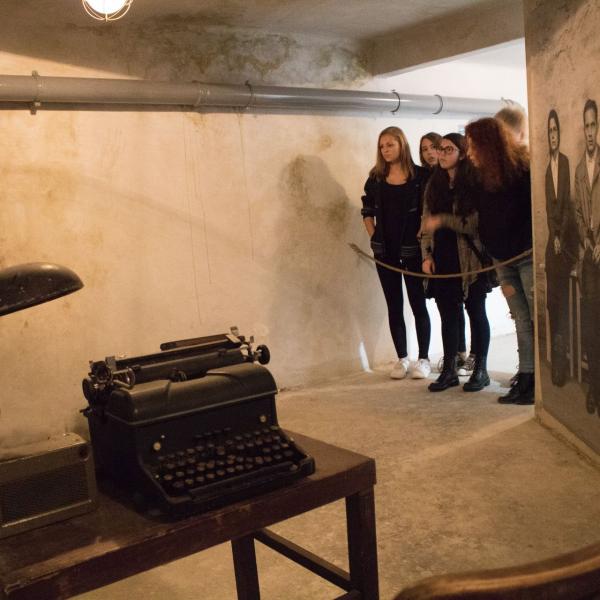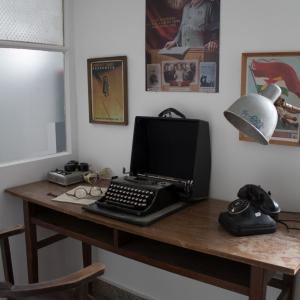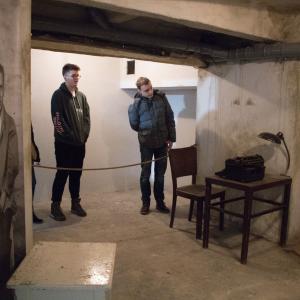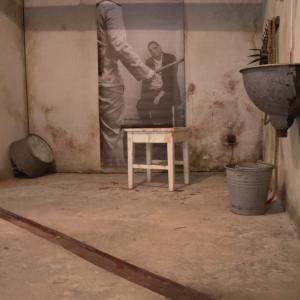Due to the communist dictatorship in East-Central Europe almost 1 million people died of starvation, lost their lives in forced labour camps, or were executed in show trials. Even more people became physically and psychologically devastated by the everyday reality of the political system.
The Memorial of the Victims of the Communist Regime was inaugurated in May 2017 in Zalaegerszeg, in the city centre, in 5 Mártírok street, where the ill-famed power-enforcement organization, the State Protection Authority (ÁVH) used to operate. The exhibition area was arranged and furnished in its original environment in about eighty square metres and was enriched by interiors and professional material.
Immediately after entering the gate visitors can see the one-time porter’s cubicle on the left. Only the most important items are found in the hall, the posters on the wall recall the era. The room of the officer on duty on the mezzanine-floor is furnished with objects from the early days of socialism, a radio is broadcasting the news in the room. After leaving the room and being properly “inspected” visitors can get to the basement. In the basement hallway visitors are welcome by a textile graphics: a secret police officer belonging to the State Protection Authority looks sternly into the eyes of the visitors.
A prison cell furnished with an iron bunk is hidden behind the door next to him where a 33-year-old ex-officer and a 20-year-old deportee are talking about their life under their breath. As visitors pass on, they enter an auditorium where a documentary film on a projector features the brutality and horror of the State Protection Authority. Next to it a memorial room is established and decorated with posters by the designers of the place to recall the dictatorial events of the era. The sixth premise is the room of torture and interrogation. Its constitution clearly reflects its function. There is a moving sound effect in the room: sentences of a brutal interrogation based on the written recollections of some survivors can be heard.
From time to time, we organize museum pedagogy workshops in the exhibition area for young people to better apprehend the history of this era and to help them capitalize on their knowledge in their studies through their personal involvement.




